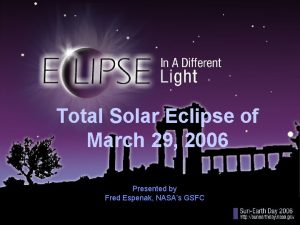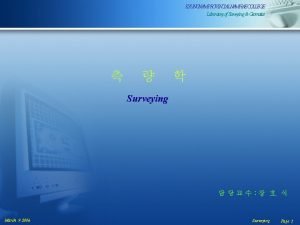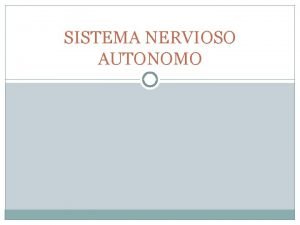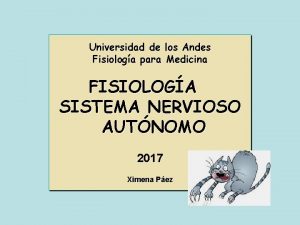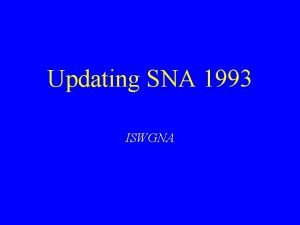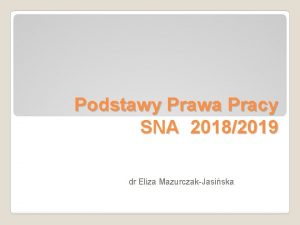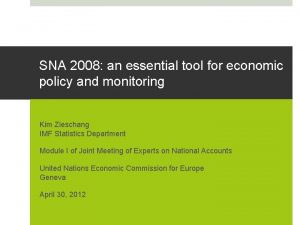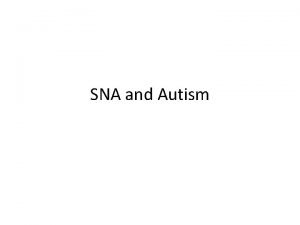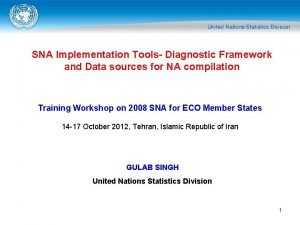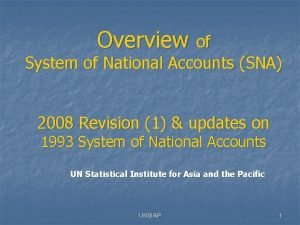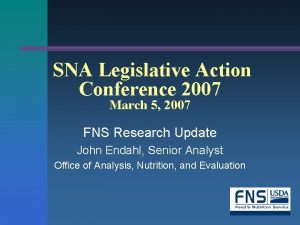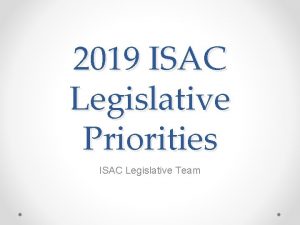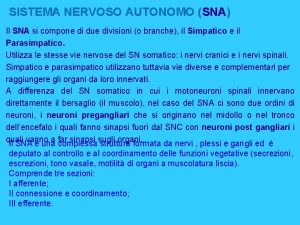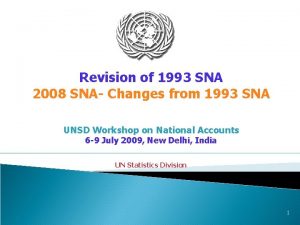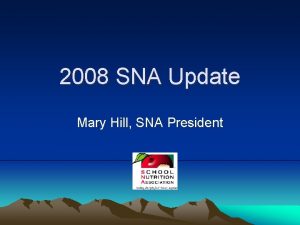SNA Legislative Action Conference 2006 March 13 2006













- Slides: 13

SNA Legislative Action Conference 2006 March 13, 2006 FNS Research Update Alberta Frost, Director Office of Analysis, Nutrition, & Evaluation

Selected Ongoing or Recently Completed Studies • Improve Program Access – Analysis of SFSP and Food Needs of Nonparticipating Children – Pennsylvania SFSP Rural Eligibility Pilot Project • Build A Healthier. US/Obesity Prevention – School Nutrition Dietary Assessment Study-III (SNDA-III)

Selected Ongoing or Recently Completed Studies • Improve Program Integrity – Feasibility of Data Matching in NSLP – Regional Office Review of Applications (RORA) – NSLP/SBP Access, Participation, Eligibility and Certification Study (APEC) – School Lunch and Breakfast Meal Cost Study – CACFP Sponsor Tiering Determination

Studies Being Presented Today • School Nutrition Dietary Assessment Study. III (SNDA-III) • Regional Office Review of Applications (RORA) • NSLP/SBP Access, Participation, Eligibility and Certification Study (APEC) • School Lunch and Breakfast Cost Study -II

School Nutrition Dietary Assessment Study-III (SNDA-III) • Agency’s periodic assessment of the nutritional effects of school meals. • SNDA-II (School Year 1998 -1999) examined the nutritional quality of school meals (not intakes). • This nationally representative study will examine: – SFA characteristics/operations – Nutritional quality of meals offered/served – Participant characteristics – Student dietary intakes and the contribution of school meals to these intakes.

SNDA-III • Sample includes about 135 public SFAs, 400 schools, and 2, 400 students. • Data collected in School Year 2004/05 is currently being analyzed. • Final reports are expected in Fall 2006

Regional Office Review of Applications (RORA) – Study Objective: Estimate the rate of administrative accuracy in: • SFA eligibility determinations for f/rp meals • SFA meal ticket status – Nationally representative sample of 56 SFAs – Random sample of about 50 applications per SFA collected by Regional staff in SY 2004/05 and analyzed by FNS Headquarter staff – Report Released in December 2005 – Similar data collection to continue in future years

RORA 2005 Results • SFAs made incorrect eligibility determinations on 3. 5% of approved/denied applications at the time of certification. • The percentage of applications in error was slightly higher (4. 2%) for income-based applications only. • 83 percent of the incorrectly certified applications resulted in students being certified for more benefits than were justified.

NSLP/SBP Access, Participation, Eligibility, and Certification Study (APEC) • This study is being undertaken to meet the requirements of the Improper Payments Information Act of 2002 (P. L. 107 -300) for estimating the extent of overpayments, underpayments and overall erroneous payments made under NSLP and SBP. • This study will examine erroneous payments attributable to misclassification of students (administrative error, household misreporting) and meal counting and claiming errors.

APEC • Data is being collected in SY 2005 -2006, from a nationally representative sample of: – About 240 schools in 80 SFAs – About 3, 200 household. • Data collection includes: – record abstractions (applications, meal count and claiming forms) – telephone surveys of SFA staff – in-person interviews with households – on-site observation of cashier transactions. • Final report is expected in 2007.

School Lunch and Breakfast Cost Study – II • Study objective: Determine the average cost of producing reimbursable school meals • This study will use a direct measurement approach similar to the methodology used in the last meal cost study completed in 1994.

School Lunch and Breakfast Cost Study – II • On-site data collection will occur in about 3 schools in a nationally representative sample of 122 school districts during SY 2005/06. • Review of final FY 2005/06 annual financial statements, review of indirect cost allocations and identification of unreported costs will occur in Fall 2006. • A final report is expected in Fall 2007.

Questions or Comments


